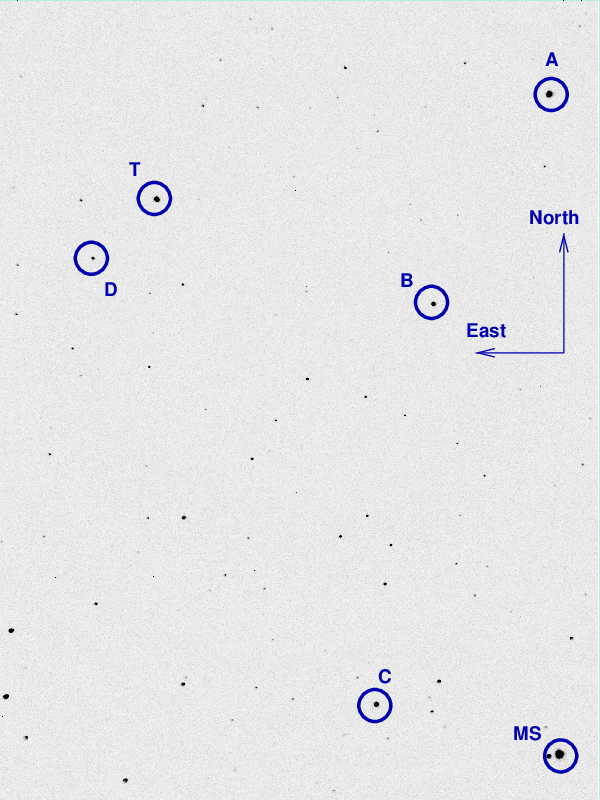
On the night of Sep 28/29, 2025, under good conditions, I acquired images of the recurrent nova T CrB. This star undergoes outbursts at long intervals of 80 years or so. Its next outburst is predicted to occur soon (but then again, it was also predicted to occur during 2024), and so I've joined the crowd who are monitoring it.
The new autoguider performed very well this evening -- the first time it has actually modified the telescope's motion. Hooray! I also measured the offset between the main camera's field of view and the autoguider's field of view.
The star remains quiescent.
This recurrent nova brightens by about 8 magnitudes (!), from V = 10 to about V = 2, around every 80 years. Will we see another outburst THIS summer?
These observations involved:
Notes from the night:
The picture below shows a cropped image of the field of T CrB from Jun 14/15, 2024. The field of view is about 20 arcminutes across.

I've marked the location of several comparison stars, with magnitudes and names taken from the AAVSO's table X40237AAS. Note that the magnitudes listed for stars "A" and "B" have changed from the ones I listed in last year's notes.
star name B V
------------------------------------------------------
A 000-BJS-901 11.096 10.554
B 000-BBW-805 11.779 11.166
C 000-BPC-198 13.049 12.336
--------------------------------------------------------------------------
When the target is centered, the finder TV shows this field:
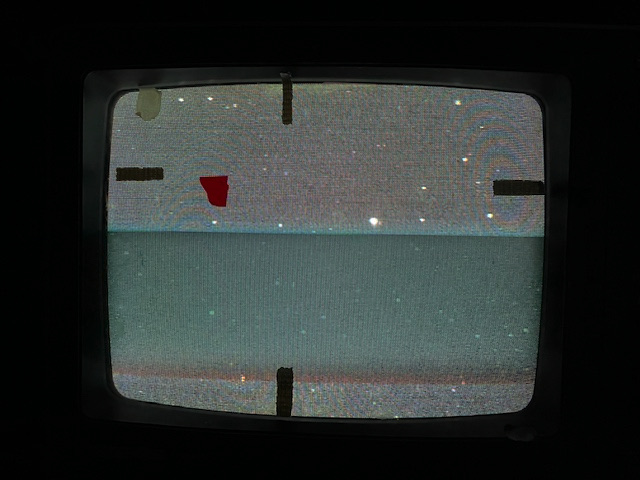
Here's the sky background over the course of the run. No clouds at all -- just clear skies.
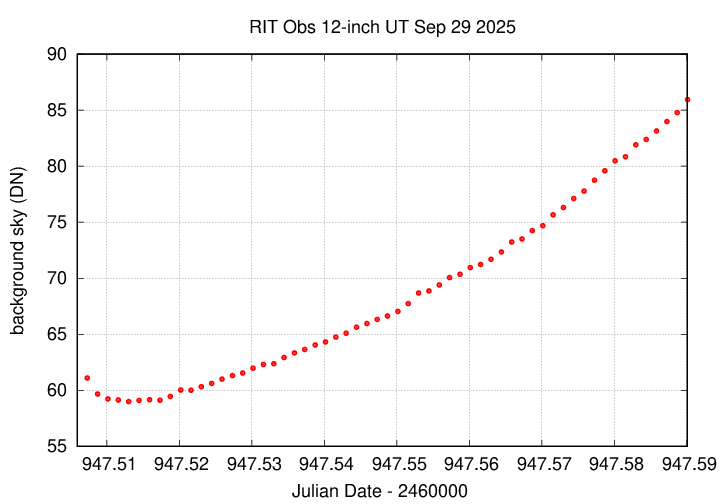
The FWHM was pretty steady.
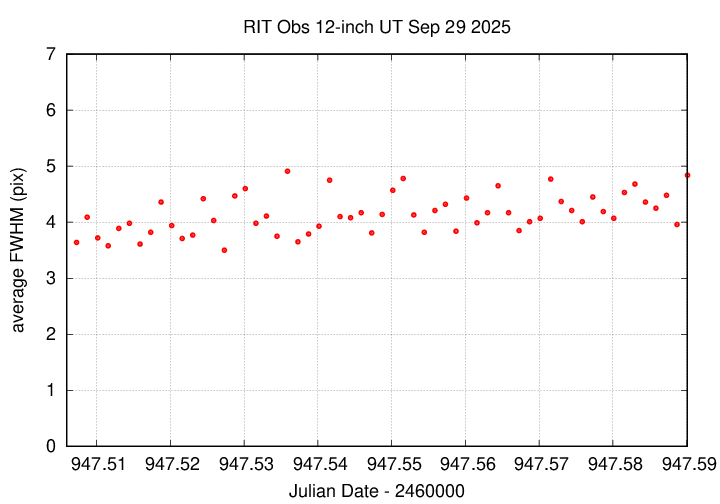
The graph below shows changes in the photometric zeropoint of an ensemble solution of the instrumental magnitudes over the course of the run. Again, no evidence for clouds.
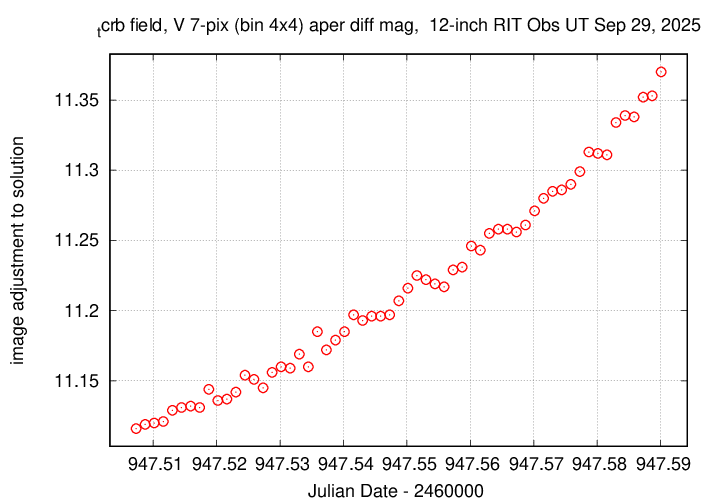
Using aperture photometry with a radius of 7 pixels in V filter (binned 4x4, each pixel is 1.036 arcsec, so a radius of 7.3 arcsec), and 7 pixels in B filter (binned 4x4, each pixel is 1.036 arcsec, so a radius of 7.3 arcsec), I measured the instrumental magnitudes of a number of reference stars and the target. Following the procedures outlined by Kent Honeycutt's article on inhomogeneous ensemble photometry, I used all stars available in each image to define a reference frame, and measured each star against this frame.
Sigma-vs-mag plots show that the floor in V-band was about 0.007 mag in V, not bad for measurements at airmass 1.44 - 2.60. it was 0.007 in B.
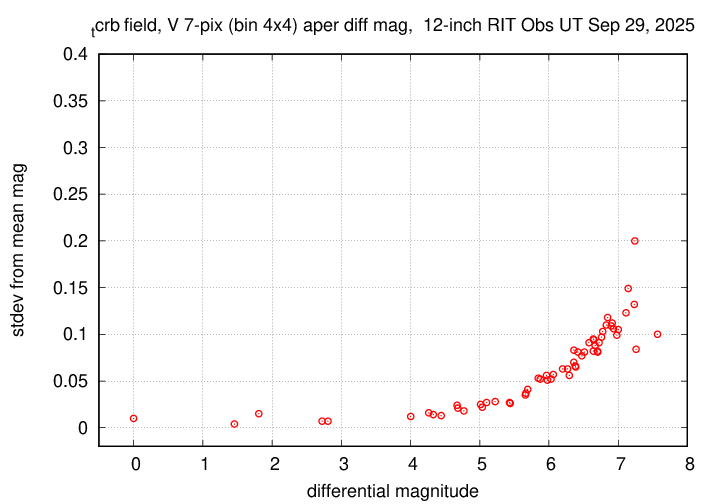
The measurements show that the target is still in quiescent phase.
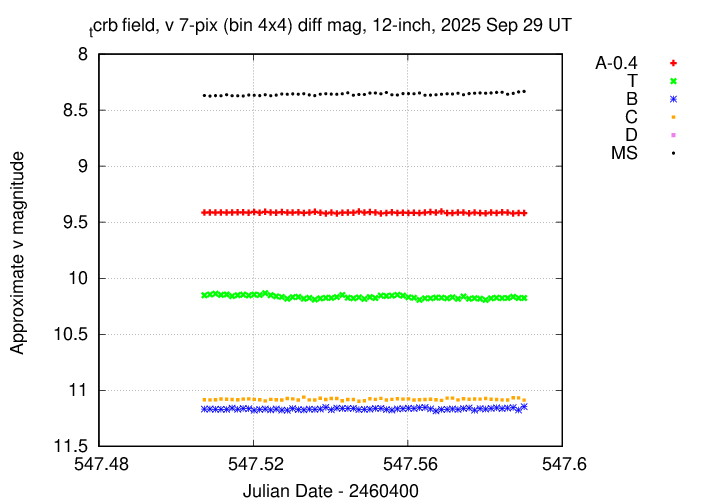
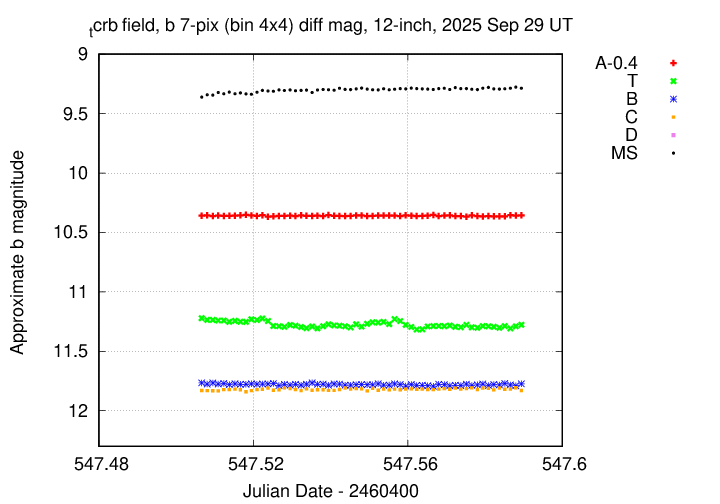
I've submitted these measurements to the AAVSO.
I discovered that the autoguider's field is not located to the East of the main camera, but to the WEST. The offset is very roughly 18 or 19 arcminutes, as shown by the images of the Moon below. Here, I've flipped the autoguider's image vertically to orient it in the same manner -- North up, East left -- as the main camera's image. The yellow cross is roughly the center of the main camera's image, and the magenta cross is roughly the center of the autoguider's image.
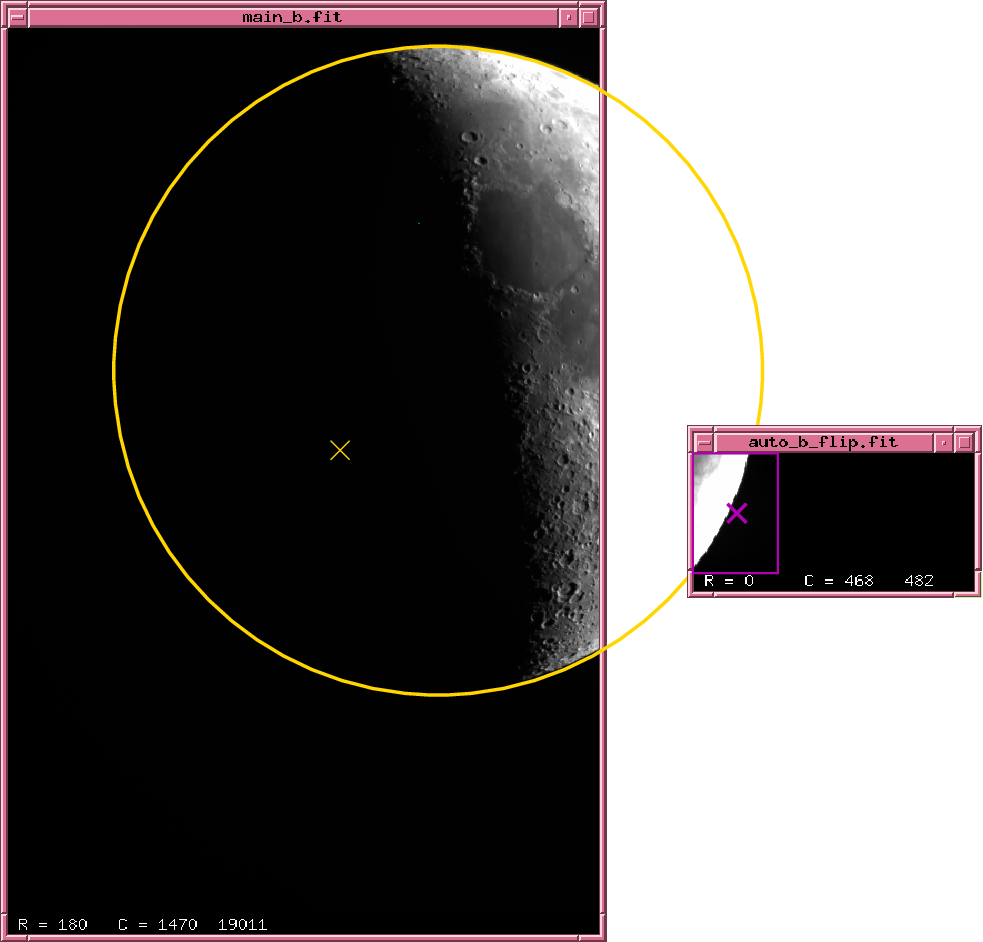
The offset is very approximate because the autoguider image doesn't show any distinct features on the lunar surface, so I simply shifted the image until the curve of the limb matches up with a drawn-by-hand circle around the main camera's picture of the Moon.
I ought to go to a rich field in the Milky Way, point the main camera at some bright star, then take a long exposure through the autoguider to pin down the offset between them.